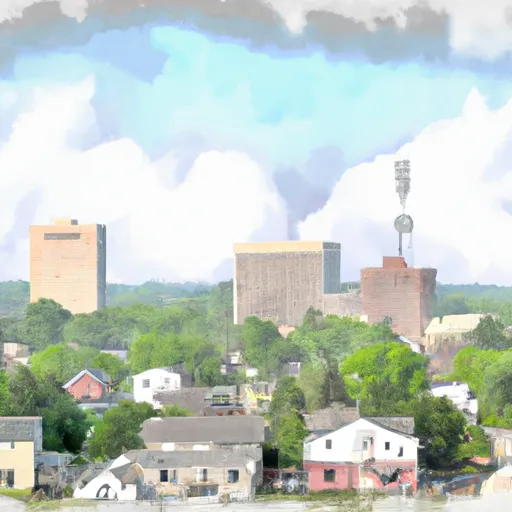°F
°F
mph
Windspeed
%
Humidity











Seven-Mile, Ohio is a small village located in Butler County, in the southwestern region of the state. The climate in Seven-Mile is classified as humid continental, experiencing warm summers and cold winters. Average temperatures range from the high 80s°F in summer to the mid-20s°F in winter. Precipitation is evenly distributed throughout the year, with occasional snowfall during winter months.
The hydrology constituents in Seven-Mile are mainly influenced by the Great Miami River, which runs adjacent to the village. This river contributes to the local water supply and offers opportunities for various recreational activities. Fishing enthusiasts can enjoy angling for bass, catfish, and a variety of other freshwater species.
In terms of outdoor recreation, Seven-Mile provides a range of options. The Great Miami River Trail, a scenic multi-use trail, runs through the village, providing opportunities for walking, jogging, and biking. The river also offers boating and kayaking possibilities. Additionally, there are several nearby parks and nature reserves, such as Hueston Woods State Park, where visitors can enjoy camping, hiking, wildlife observation, and picnicking.
Overall, Seven-Mile, Ohio offers a moderate climate, access to the Great Miami River, and diverse outdoor recreation opportunities, making it an attractive destination for nature lovers and outdoor enthusiasts.
Weather Forecast
Seven-Mile receives approximately 1074mm of rain per year, with humidity levels near 81% and air temperatures averaging around 12°C. Seven-Mile has a plant hardyness factor of 6, meaning plants and agriculture in this region thrive during a short period during spring and early summer. Most plants will die off during the colder winter months.
Regional Streamflow Levels
47
Cubic Feet Per Second
939
Cubic Feet Per Second
24
Cubic Feet Per Second
38
Cubic Feet Per Second
Nearby Camping
| Camping Area | Reservations | Toilets | Showers |
|---|---|---|---|
| Harrison Lake State Park | |||
| Miami Whitewater Forest | |||
| Big Bone Lick State Park | |||
| Logan-Hubble County Park | |||
| Bullock Pen Lake Ramp - DFWR | |||
| Boltz Lake Ramp - DFWR |



